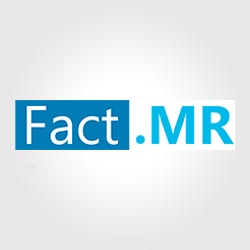Ovarian cancer is developed by uncontrollable growth of cells in ovaries. Made up of three different types of cells, ovaries may develop three different types of tumors. Majority of these tumors are non-cancerous, which can be treated by removing either part of the ovary containing the tumor, or by removing the ovary itself.
The American Cancer Society estimates that approx. 20,000 women will be diagnosed with ovarian cancer in the U.S. and more than 14,000 will lose their lives because of it in 2017 alone. In terms of deaths, this form of cancer ranks fifth and it led to more deaths than any other female reproductive system form of cancer. The chance of a women developing ovarian cancer during her life is 1 in 75 and the chance of her dying is 1 in 100. It is mainly seen in older women above the age of 63 years. Even though the rate at which women have been diagnosed with ovarian cancer has been falling, it is still a public health menace that needs to be tackled effectively. This is where the ovarian cancer diagnostics market can play a crucial role. The Global Ovarian Cancer Diagnostics Market is predicted to grow with a CAGR of 8.7% and be worth nearly US$ 1 billion in 2022, from less than US$ 640 million in 2017.
Epithelial Tumours Segment larger than the other two combined
The Epithelial Tumours Segment is anticipated to grow to almost US $ 880 million by the end of the forecast period and it already accounts for an 11% revenue share in 2017 itself. North America alone represents almost 2/5th of the market and it should touch US$ 330 million by the end of 2022. The germ cell carcinoma tumours segment is much smaller by comparison and is only poised to be a US$ 50 million market by the end of the five year study. Even the stromal carcinoma tumours segment is marginal at best when contrasted with epithelial tumours in the ovarian cancer diagnostics market. The stromal carcinoma tumours segment is likely to be valued at only US$ 28 million in 2017.
Hospital associated and independent diagnostic labs most vital
The hospital associated lab segment is expected to record a CAGR of 7.8% from 2017-2022 and rise from just under $300 million in 2017 to roughly US$ 440 million in 2022. Independent diagnostic labs are the second most important segment in the ovarian cancer diagnostics market and are estimated to be worth US$ 161 million in 2017. While North America might account for the largest contribution, Europe should record a higher CAGR of 9.5% making it more attractive to target in the long term.
Focus on CA 125 test segment in the ovarian cancer diagnostics market
The CA 125 test segment could be worth roughly US$ 440 million in 2022 and some key stakeholders may decide to focus on this lucrative test over all other available alternatives in the ovarian cancer diagnostics market. However, the HER 2 segment also accounts for a 3.1% revenue share in 2017 and it would be unwise to do so. On the other hand, the BRCA segment in North America alone could grow with a CAGR of 8.3% for the period 2017-2022, making it imperative for companies to hedge their bets in the ovarian cancer diagnostics market.
Competition Tracking
The report has also profiled leading players in the global market for ovarian cancer diagnostics, which include Quest Diagnostics Incorporated, Myriad Genetics Inc., AstraZeneca plc., Epigenomics AG, Illumina, Inc., Bio-Rad Laboratories, Inc., Siemens AG, Thermo Fisher Scientific Inc., Roche Holding AG., and Abbott Laboratories.



